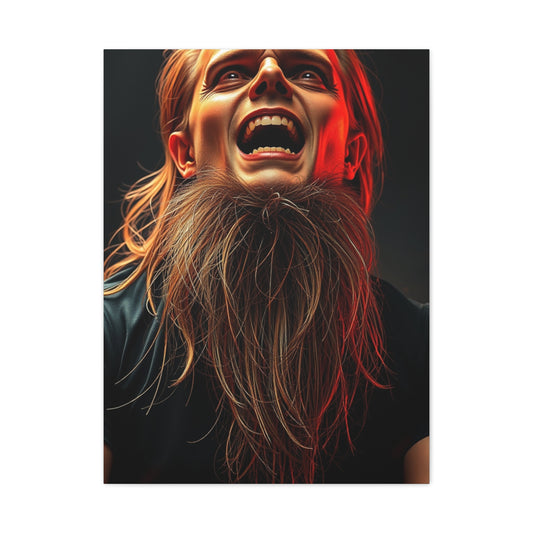As the weather warms up and outdoor gatherings become more frequent, it’s the perfect time to refresh your patio with stylish wall décor. Wall art is an easy way to breathe new life into your outdoor space without the need for a full renovation. Whether you’re hosting summer soirees or simply relaxing in the fresh air, the right wall art can enhance your patio and create an inviting atmosphere. Let’s dive into expert tips and creative ideas for choosing the best patio wall décor.
Elevating Your Outdoor Space: A Comprehensive Guide to Patio Wall Art
Transforming your patio into a sanctuary of style and comfort begins with thoughtful design choices. One of the most impactful elements in this transformation is the selection and placement of patio wall art. This guide delves into the nuances of choosing, installing, and maintaining outdoor wall art, ensuring your patio becomes a reflection of your personal aesthetic while withstanding the elements.
Understanding the Role of Patio Wall Art
Patio wall art serves as more than just decoration; it acts as a statement piece that can define the ambiance of your outdoor space. Whether it's a vibrant mural, a set of metal sculptures, or a series of framed prints, the right artwork can infuse personality and warmth into your patio. The key is to select pieces that resonate with your style and complement the existing elements of your outdoor area.
Selecting the Perfect Outdoor Wall Art
Choosing the right wall art for your patio involves considering various factors to ensure longevity and visual appeal.
1. Material Matters
The durability of outdoor wall art largely depends on the materials used. Opt for pieces crafted from weather-resistant materials such as stainless steel, aluminum composite, or solution-dyed acrylic. These materials are designed to withstand the rigors of outdoor exposure, including moisture, UV rays, and temperature fluctuations.
2. Size and Scale
The size of your wall art should be proportionate to the space available. Oversized pieces can dominate a small patio, while tiny artworks may get lost on a large wall. Consider the scale of your furniture and other elements to ensure a harmonious balance.
3. Theme and Style
Your choice of theme—be it coastal, rustic, modern, or eclectic—should align with the overall design of your patio. The style of the artwork should complement the color palette and materials used in your outdoor furnishings and landscaping.
Strategic Placement of Wall Art
Proper placement of your patio wall art is crucial for both aesthetic appeal and preservation.
1. Sheltered Areas
Install your artwork in areas that offer some protection from the elements. Spaces under pergolas, gazebos, or eaves provide shelter from rain and direct sunlight, prolonging the life of your art.
2. Avoid High-Traffic Zones
Positioning art in high-traffic areas can expose it to physical damage. Choose locations where the artwork can be appreciated without the risk of being bumped or knocked.
3. Consider Lighting
Strategic lighting can enhance the visual impact of your wall art during the evening. Use outdoor-rated spotlights or LED strips to illuminate your pieces, creating a captivating focal point after sunset.
Maintenance Tips for Longevity
To ensure your patio wall art remains vibrant and intact, regular maintenance is essential.
1. Regular Cleaning
Dust and debris can accumulate on your artwork, dulling its appearance. Clean your pieces periodically using a soft cloth and mild detergent. Avoid abrasive materials that can scratch the surface.
2. Protective Coatings
Applying a UV-resistant sealant can help protect your artwork from sun damage. For metal pieces, a rust-inhibiting primer and topcoat can prevent corrosion.
3. Seasonal Inspections
Before and after extreme weather conditions, inspect your wall art for signs of wear or damage. Promptly address any issues to prevent further deterioration.
Creative Ideas to Personalize Your Patio
Infuse your patio with character by incorporating unique and personalized elements.
1. Vertical Gardens
Combine art with greenery by installing wall-mounted planters or trellises. These additions not only enhance the visual appeal but also introduce natural elements into your outdoor space.
2. Mixed Media Installations
Blend different materials and textures to create a dynamic and engaging display. Pairing metal sculptures with wooden frames or fabric elements can add depth and interest to your patio walls.
3. Custom Artwork
Commissioning custom pieces allows you to infuse your personal story or interests into your patio design. Whether it's a hand-painted mural or a bespoke sculpture, custom art can make your outdoor space truly unique.
Patio Wall Décor: Exploring Different Shapes and Sizes
When it comes to choosing patio wall art, the size and shape of the artwork play a significant role in the overall aesthetic. Here are some layout options to suit a variety of patio designs:
-
Sleek and Sophisticated: A single-panel rectangle or square canvas offers a clean, minimalistic look, perfect for modern outdoor settings.
-
Classic with a Twist: A vertical canvas or panoramic single-panel artwork can add a bit of height and drama, creating a striking focal point.
-
Bold and Balanced: A triptych or symmetrical five-panel canvas gives your patio a well-coordinated yet bold look.
-
Modern Flair: The split two-piece canvas or four-panel “wave” canvas brings an edgy, contemporary vibe to any space.
-
Eclectic and Fun: For a playful approach, consider a seven-piece hexagonal canvas set that adds visual intrigue and creativity.
Framed vs. Unframed Patio Art: Which Is Best for Your Space?
When deciding between framed and unframed artwork, it’s essential to consider both aesthetics and practicality. Framed art offers a polished, complete look and adds a layer of protection, which can be beneficial for outdoor pieces. It provides a unique floating effect, giving your artwork an airy feel. On the other hand, unframed canvas prints provide a modern, minimalist look that complements contemporary furniture styles, allowing the artwork to blend seamlessly with your outdoor décor
Choosing Between Framed and Unframed Patio Wall Art: A Comprehensive Guide
When it comes to enhancing your patio's aesthetic appeal, selecting the right wall art is crucial. One of the primary decisions you'll face is whether to opt for framed or unframed patio wall art. Each choice offers distinct advantages and considerations, influencing both the visual impact and practicality of your outdoor space.
Understanding Framed Patio Wall Art
Framed patio wall art involves artwork that is encased in a protective frame, often made from materials like wood, metal, or composite materials. This framing serves multiple purposes:
1. Enhanced Protection
A frame acts as a barrier against environmental elements such as wind, rain, and direct sunlight, which can cause wear and fading over time. This is particularly beneficial for preserving the integrity of your artwork in an outdoor setting.
2. Sophisticated Aesthetic
Framed art pieces often exude a polished and refined look, adding a touch of elegance to your patio. The frame can complement your existing décor, creating a cohesive and stylish appearance.
3. Ease of Maintenance
The protective frame can make cleaning and maintaining the artwork more straightforward, as it shields the edges and surface from dust and debris.
However, it's essential to consider that framed patio wall art can be more susceptible to damage from physical impacts. Additionally, the frame may require periodic maintenance, such as repainting or sealing, to prevent deterioration from exposure to the elements.
Exploring Unframed Patio Wall Art
Unframed patio wall art, on the other hand, presents a different set of characteristics:
1. Minimalist and Contemporary Appeal
Unframed art pieces often showcase a modern and minimalist aesthetic, allowing the artwork to stand out without the distraction of a frame. This style can seamlessly integrate with various patio designs, particularly those emphasizing clean lines and simplicity.
2. Cost-Effective Option
Without the additional expense of framing, unframed patio wall art can be a more budget-friendly choice. This affordability makes it accessible for those looking to decorate their outdoor space without significant investment.
3. Flexibility in Display
Unframed art offers versatility in how it's displayed. Without a frame, you have the freedom to experiment with different hanging methods or arrangements, allowing for a dynamic and personalized display.
However, unframed patio wall art may be more vulnerable to environmental factors. Without the protection of a frame, the edges and surface of the artwork are exposed to potential damage from weather conditions and physical contact.
Factors to Consider When Choosing Between Framed and Unframed Patio Wall Art
To determine which option best suits your patio, consider the following factors:
1. Climate and Environmental Conditions
If your patio is exposed to harsh weather conditions, framed patio wall art may offer better protection against the elements. Conversely, in milder climates, unframed art can thrive without significant risk of damage.
2. Desired Aesthetic
Consider the overall style of your patio. Framed art may complement traditional or formal designs, while unframed pieces can enhance modern or minimalist aesthetics.
3. Budget Constraints
If you're working within a specific budget, unframed patio wall art can provide an affordable solution without compromising on style.
4. Maintenance Willingness
Assess your willingness to maintain your patio art. Framed pieces may require more upkeep to preserve their appearance, while unframed art may demand less attention.
Expert Patio Design Tips
Interior design expert Elimar Lobo Sáenz shares her top advice for creating an inviting outdoor space:
-
Maximize Comfort: Incorporate a hammock or a swinging chair for relaxation, or add a fire-pit or barbecue for memorable social gatherings.
-
Bring Nature In: Hang a bird feeder to attract wildlife, and string up fairy lights for a whimsical, cozy ambiance. Lanterns can also create a romantic touch for evening gatherings.
-
Add Warmth with Accessories: Rattan, wicker, and other light woods bring an elegant, natural feel to your patio while maintaining a breezy atmosphere.
Transform Your Patio into a Serene Outdoor Oasis
Creating a peaceful outdoor retreat doesn’t require a complete backyard overhaul or a huge budget. With the right design choices and thoughtful elements, you can turn even the smallest balcony or patio into a private oasis where you can unwind, entertain, and connect with nature. One of the best ways to elevate your outdoor space is by incorporating stylish yet durable décor that brings comfort, character, and visual harmony.
In this guide, we’ll explore how to make your patio feel like an inviting escape, using airy textures, natural materials, layered design techniques, and, of course, impactful wall art from Wallart to enhance your space with unique charm and enduring style.
Choose a Calming Color Palette Inspired by Nature
Begin your outdoor design journey by selecting a color scheme that reflects the natural surroundings. Think tranquil hues like seafoam green, dusty rose, warm terracotta, muted taupe, or soft ivory. These tones evoke feelings of serenity and relaxation while seamlessly blending with the outdoor environment. If your space includes lush greenery or vibrant floral blooms, use those colors as a foundation and add complementary shades in your furnishings and décor.
Soft colors also help to visually expand smaller patios, making them feel more open and inviting. Consider layering different shades of the same color for depth, or mix in gentle patterns to prevent the space from feeling flat.
Embrace Natural Materials and Organic Textures
To truly channel the essence of an outdoor oasis, choose natural materials that add authenticity and tactile warmth. Wicker, bamboo, rattan, teak, and reclaimed wood are all excellent choices for outdoor furniture. These elements not only evoke an earthy aesthetic but also harmonize with the environment.
When it comes to textiles, opt for outdoor-safe fabrics like weather-treated cotton, linen blends, or recycled polyester. These moisture-resistant materials can endure the elements while offering the softness and comfort needed to lounge or dine outside.
Complement your seating area with layered textures—think jute rugs, cotton poufs, and woven throws. A mix of textures brings coziness and a refined, bohemian flair, ideal for lazy afternoons under the sun or cozy evenings under the stars.
Add Depth with Wall Art That Speaks to Your Style
Outdoor wall art is a game-changer in transforming your patio into a fully curated space. Whether your style leans coastal, minimalist, tropical, or eclectic, Wallart offers an extensive selection of durable, visually striking artwork designed to handle outdoor conditions.
Imagine a large abstract canvas with calming neutrals hanging above a rattan loveseat, or a botanical print complementing the greenery surrounding your patio. Wall art adds an element of sophistication and a personalized touch that makes your patio feel like a true extension of your home.
Choose pieces that echo the mood you're aiming for—serene seascapes for coastal calm, bold graphic prints for a modern vibe, or vintage botanical illustrations for a rustic retreat. Remember, artwork can be rotated seasonally to keep the space feeling fresh and dynamic year-round.
Create a Multi-Sensory Experience
An outdoor oasis should delight all your senses. Incorporate soothing sounds, soft lighting, and fragrant plants to create a fully immersive experience. A tabletop fountain or subtle wind chimes can introduce gentle ambient sounds that drown out urban noise. For lighting, string lights, lanterns, or LED candles add ambiance and allow you to enjoy your space even after the sun sets.
Bring in aromatic herbs like lavender, rosemary, and mint. Not only do they offer delightful scents, but they can also be used in your cooking or for herbal teas. Climbing jasmine, eucalyptus, and citrus plants also work beautifully to enhance both fragrance and visual appeal.
Prioritize Comfort with Cozy Lounge Areas
To fully enjoy your outdoor retreat, make comfort a top priority. Start with comfortable seating—whether it’s a deep-cushioned sectional, a hanging egg chair, or a daybed draped in soft textiles. Add oversized throw pillows in a variety of shapes and fabrics to create an effortlessly casual, lounge-ready vibe.
Place a coffee table or side table within easy reach, perfect for morning lattes, evening cocktails, or displaying decorative items like candles and miniature planters. Rugs also play a big role in grounding your seating area—opt for an outdoor rug made from woven polypropylene or recycled PET for style and durability.
Layer your seating with light blankets or throws for cooler nights, especially if your patio is used during transitional seasons. All these comfort-forward additions ensure your oasis is as inviting as it is beautiful.
Incorporate Greenery in Creative Ways
No oasis is complete without lush greenery. Incorporating plants is one of the most effective ways to soften the hard lines of architectural elements and breathe life into your space. Choose a variety of plants with different textures and heights to add dimension—mix potted palms, hanging ferns, and climbing ivy for a wild, romantic feel.
If space is limited, vertical gardening options such as mounted planters or green walls are a great solution. Hanging plants in macramé holders or placing a few small succulents on side tables can also make a big impact without cluttering the space.
Pair your greenery with nature-inspired wall art from Wallart for a cohesive look that emphasizes tranquility and natural beauty.
Design Zones for Functionality and Flow
Even a compact patio can benefit from purposeful zoning. Define areas for lounging, dining, and possibly even working by using rugs, lighting, and furniture placement. This creates a sense of order while maximizing the functionality of your outdoor space.
Consider using foldable furniture if space is tight, or choose modular pieces that can be rearranged as needed. Keep pathways clear and allow for smooth transitions between zones, ensuring your outdoor area feels open and inviting rather than cramped or chaotic.
Adding an outdoor bar cart, storage bench, or multi-functional ottoman can further enhance the flow and convenience of your space, making it perfect for both quiet solo time and lively social gatherings.
Weatherproof Without Compromising Style
Durability doesn’t have to mean sacrificing beauty. Today’s outdoor décor options include elegant materials that can stand up to the elements while maintaining visual appeal. Look for items labeled water-resistant, fade-resistant, or UV-protected.
Outdoor wall art from Wallart is made with quality in mind, ensuring that colors stay vibrant and materials remain intact through sun, wind, and rain. This means you can display meaningful or decorative pieces outside without constant worry about weather damage.
Waterproof storage boxes are another must-have, allowing you to store cushions, throws, or even dining essentials conveniently while keeping them protected from the elements.
Make It Personal
Finally, no outdoor oasis is complete without a personal touch. Add items that bring you joy—perhaps a hand-painted ceramic sculpture, a vintage lantern, or a family heirloom repurposed for outdoor use. Display your favorite quotes, your child’s art reimagined on canvas, or a print of your dream vacation spot.
Wallart’s customizable canvas prints make it easy to infuse your patio with personality. Turn your favorite travel photo into a statement piece, or create a gallery wall that tells your story. Your outdoor space should be a reflection of who you are—warm, welcoming, and wonderfully unique.
Embracing Minimalism: The Essence of Modern Patio Design
Minimalism in design is not merely about reducing clutter; it's about enhancing the beauty of simplicity. For outdoor spaces like patios, this translates to selecting decor that complements the natural surroundings without overwhelming them. Minimalist wall art serves as a perfect medium to achieve this balance, offering elegance through simplicity.
The Impact of Minimalist Wall Art on Outdoor Spaces
In a patio setting, wall art becomes a focal point that draws attention without dominating the space. Whether it's a monochromatic print, a geometric design, or a subtle abstract piece, minimalist art can transform a plain wall into a statement feature. The key is to choose artworks that resonate with the overall aesthetic of the patio, enhancing its ambiance and providing a sense of cohesion.
Selecting the Right Minimalist Art for Your Patio
When choosing minimalist wall art for your patio, consider the following elements:
1. Design and Theme
Opt for designs that reflect the tranquility and openness of outdoor living. Abstract forms, geometric patterns, and nature-inspired motifs are excellent choices. These themes align well with minimalist principles, focusing on form and space rather than intricate details.
2. Color Palette
A neutral color scheme is characteristic of minimalist art. Shades of white, grey, beige, and black can create a calming effect. However, incorporating subtle accents of colors like mustard yellow, burnt orange, or teal can add warmth and personality to the space without disrupting its serene vibe.
3. Material and Texture
The materials used in the artwork should be durable and suitable for outdoor conditions. Metal, weather-resistant canvas, and treated wood are popular choices. These materials not only withstand the elements but also add texture and depth to the art, enhancing its visual appeal.
Placement and Scale: Creating Harmony
The placement of wall art is crucial in achieving a harmonious patio design. Consider the scale of the artwork in relation to the wall and surrounding furniture. A large piece can serve as a central focal point, while smaller artworks arranged in a grid or linear fashion can create a cohesive gallery wall. Ensure that the art is positioned at eye level and maintains a balanced relationship with other elements in the space.
Integrating Wall Art with Patio Furniture and Landscaping
For a cohesive look, coordinate the style of the wall art with the patio furniture and landscaping. For instance, if your patio features wicker furniture, consider incorporating wall art that complements the texture and color of the wicker. Similarly, if your patio is adorned with lush greenery, choose artworks that highlight the natural surroundings, perhaps through botanical themes or earthy tones.
DIY Minimalist Wall Art Ideas for Patios
Creating your own minimalist wall art can be a fulfilling endeavor. Here are some ideas to inspire your creativity:
-
Abstract Line Drawings: Use simple lines to create abstract forms that evoke movement and flow.
-
Geometric Shapes: Paint or stencil bold shapes like circles, triangles, or squares in a monochromatic palette.HomeISD+1Etsy+1
-
Nature Silhouettes: Silhouette forms of trees, leaves, or animals can add a natural touch to your patio decor.
-
Textured Wall Hangings: Incorporate materials like rope, fabric, or wood to create textured wall hangings that add depth and interest.
These DIY projects allow you to personalize your patio space, infusing it with your unique style and creativity.
Maintaining Your Outdoor Wall Art
To ensure the longevity of your outdoor wall art, regular maintenance is essential. Clean the artworks periodically to remove dust and debris. For metal pieces, check for signs of rust and treat them promptly. If your art is framed, ensure that the frames are sealed to prevent water damage. By taking these steps, you can preserve the beauty of your minimalist wall art and keep your patio looking pristine.
Curating Color Palettes for Outdoor Wall Art: A Guide to Open-Air Aesthetics
Designing a patio isn’t just about choosing furniture or potted plants—color plays a pivotal role in creating an inviting outdoor retreat. Selecting the right color scheme for your patio wall art can make your space feel cohesive, serene, and stylish. Whether you lean toward earthy neutrals or prefer vibrant bursts of seasonal hues, incorporating color strategically will help blur the boundaries between nature and your exterior design.
Outdoor wall art adds personality and visual intrigue to patio spaces, serving as a conduit between the built environment and the surrounding landscape. When thoughtfully chosen, colors can elevate this connection, creating a seamless dialogue between your patio, your home's architecture, and the natural elements beyond.
Tapping Into Nature-Inspired Tones
Earth-inspired tones are timeless for a reason. These hues, which mimic the shades found in organic materials and foliage, feel effortlessly at home in an outdoor environment. Consider starting your palette with grounded shades like sage green, dusty olive, and mossy gray. These botanical colors are inherently calming and mirror the leafy textures around your patio.
Neutral tones such as sandy beige, terracotta, and stone gray also offer an excellent foundation. These warm, sun-kissed hues capture the essence of natural landscapes and pair beautifully with wood, rattan, and other tactile materials often used in outdoor furnishings. Incorporating these shades into your wall art not only harmonizes with nature but also provides a subtle, rustic sophistication.
Emerald green is another underrated powerhouse in open-air design. It offers depth and richness, evoking lush canopies and gardens in bloom. As a base color or accent, emerald adds a regal presence that complements both traditional and contemporary outdoor décors.
Embracing Seasonal Splashes of Color
While earth tones offer serenity and connection, don't hesitate to inject your patio wall art with vibrant, mood-boosting colors that channel the energy of the seasons. In summer, for instance, consider adding artwork in refreshing hues like turquoise, sunflower yellow, coral orange, and rose pink. These vivid tones can breathe vitality into neutral backgrounds and instantly brighten shaded nooks or covered verandas.
Turquoise, in particular, pairs beautifully with natural wood and rattan, invoking a coastal, beachy atmosphere that feels breezy and relaxed. Rose pink adds charm and softness to spaces anchored by strong architectural lines, while sunny yellow offers a cheerful vibe that radiates warmth and optimism.
If you want a cohesive aesthetic, echo these colors through accompanying accents like outdoor cushions, planters, or even painted furniture legs. This creates a curated look that ties your wall art into the broader patio narrative.
Harmonizing Color With Regional Flora
One of the most underutilized design strategies when choosing patio wall art is drawing inspiration from local flora. The blossoms, leaves, and vegetation native to your region offer an incredible palette to work from. If your outdoor space overlooks a desert landscape, you might be inspired by sienna tones, soft taupes, or cactus green. In coastal regions, oceanic blues, sandy whites, and seafoam hues can capture the surrounding mood.
By referencing nearby botanical color stories, your patio can feel like a seamless continuation of the environment. Wall art that mirrors or complements nearby flowers, trees, and groundcover helps your design feel organic and rooted rather than contrived.
This synergy not only enhances visual cohesion but also creates a tranquil ambiance that invites relaxation and mindfulness.
Pairing Color With Furniture for Balance
Color balance is key when combining patio furniture with wall art. One popular trend involves pairing deep-toned modern furniture—such as matte black or charcoal gray frames—with soft, pastel-hued artwork. For instance, muted blue pieces lend a calming counterbalance to darker furniture elements, resulting in an understated but stylish effect.
Pastel blue evokes open skies and peaceful waters, making it an excellent choice for wall art in shaded patios or rooftop terraces. When placed near black metal seating or minimalist furniture, it softens the overall mood and keeps the space feeling open and airy.
For bolder tastes, consider introducing terracotta reds or mustard yellows to contrast against monochrome furniture. These tones add an artisanal touch, inspired by Mediterranean courtyards and sun-drenched gardens.
Creating Visual Layers Through Color
Wall art is more than just a single canvas or installation—it’s an opportunity to build visual depth. Use color to create layers in your patio design. For example, place a brightly-colored artwork against a subdued, neutral wall to bring forward the piece and make it pop.
Alternatively, tone-on-tone layering can add subtle dimension without overwhelming the senses. A soft lavender print against a pale gray stucco wall, or an olive-toned sculpture hung on a forest green fence, can evoke sophistication and harmony.
This technique of chromatic layering is especially effective in smaller patios or balconies, where visual clutter can easily dominate. Through thoughtful color choices, you can foster a sense of spaciousness and refined beauty.
Choosing Finishes and Textures That Enhance Color
The finish of your wall art can significantly impact how color is perceived. Glossy surfaces tend to enhance vibrancy, reflecting light and making colors appear more saturated. This works well for lively palettes, especially in partially shaded or covered patios.
On the other hand, matte and weathered finishes diffuse light and lend a soft, timeless quality to color. If you’re working with earthy tones or pastel shades, these finishes can add a touch of understated elegance.
Textured surfaces such as woven fiber panels, weathered wood backdrops, or layered metalwork can also enrich your color scheme. They catch light differently throughout the day, making your wall art feel dynamic and ever-changing.
Considering Color Psychology in Outdoor Design
The emotional impact of color is profound. In patio design, you can use color psychology to influence the mood of your outdoor sanctuary. Cool blues and greens promote calm and introspection—perfect for areas designed for relaxation or quiet conversation.
Warmer tones like amber, rust, and coral energize the space, making them ideal for social patios or entertainment zones. If you’re designing a multi-use outdoor area, consider zoning with color: use different color palettes in dining areas, lounging corners, or garden borders to subtly guide the atmosphere.
Elevating Your Outdoor Ambience with Thoughtfully Curated Patio Wall Art
Designing a patio that feels like an extension of your living space goes far beyond selecting the right furniture or choosing low-maintenance greenery. The secret ingredient that often turns a standard outdoor setting into an inviting sanctuary lies in your wall art. Patio wall art serves not only as a visual enhancement but also as an expressive layer that injects emotion, personality, and soul into the environment.
By approaching outdoor wall decor with the same intentionality you bring to your interior spaces, your patio transforms into a destination—a place that invites conversation, relaxation, and meaningful connection. The key is to choose pieces that feel like a natural continuation of your aesthetic while considering the unique demands of the outdoor elements.
Personalizing the Outdoors Through Artistic Expression
Unlike enclosed interiors, outdoor spaces allow for a more experimental and liberating approach to design. Patio wall art lets you blur the boundary between manmade structure and nature’s artistry. Whether your style leans toward contemporary abstraction, geometric minimalism, or organic motifs, wall art helps solidify your patio’s identity.
A strategically chosen piece can mirror your home's architectural elements, pick up on the palette of nearby garden beds, or contrast boldly against neutral exteriors. For example, a large-scale art print in seafoam or sienna might echo the tones found in succulents or terracotta planters nearby, making your walls feel integrated into the greater landscape.
This harmony is especially important in outdoor design, where cohesion between the built and natural environment creates an immersive and cohesive experience.
Framed vs. Unframed: Choosing What Works for You
When selecting wall art for your patio, the decision between framed and unframed pieces is more than a matter of taste—it impacts the overall durability, style, and visual structure of your space. Framed artwork offers a sense of completion, providing clean lines and often a subtle elevation effect that can make the art stand out against textured walls or wooden panels. It’s an excellent option for patios with traditional or modern themes where formality or symmetry is desired.
Unframed pieces, however, bring a contemporary, airy vibe that works particularly well in minimalist or bohemian outdoor settings. The absence of a frame keeps the focus on the artwork itself and allows for seamless blending with surrounding elements like fabric canopies, natural wood finishes, or architectural plantings. Unframed canvas prints can also feel lighter and more dynamic—perfect for environments that emphasize natural flow and freedom.
Whatever your preference, the key lies in selecting artwork that speaks to your lifestyle and resonates with the essence of how you use your space—whether that’s quiet reflection or lively social gatherings.
Designing with Simplicity: The Power of Minimalist Outdoor Wall Art
Minimalist design continues to dominate modern outdoor aesthetics, and for good reason. It celebrates balance, negative space, and intentionality—all of which are valuable when working with patios that may have spatial limitations or a strong architectural presence.
Minimalist wall art complements open-air living by not overwhelming the space. Abstract shapes, subtle textures, and limited palettes help to maintain visual clarity and tranquility. The beauty of minimalism lies in its quiet sophistication—it allows the natural light, shadows, and surrounding flora to interact with the art, creating a living, breathing composition that changes with the time of day.
Opting for minimalism doesn't mean sacrificing warmth or depth. On the contrary, a well-placed piece with quiet colors or geometric harmony can speak volumes. Imagine a faded blush circle, or a soft charcoal line pattern echoing the form of tree branches nearby. The effect is timeless, meditative, and effortlessly chic.
























